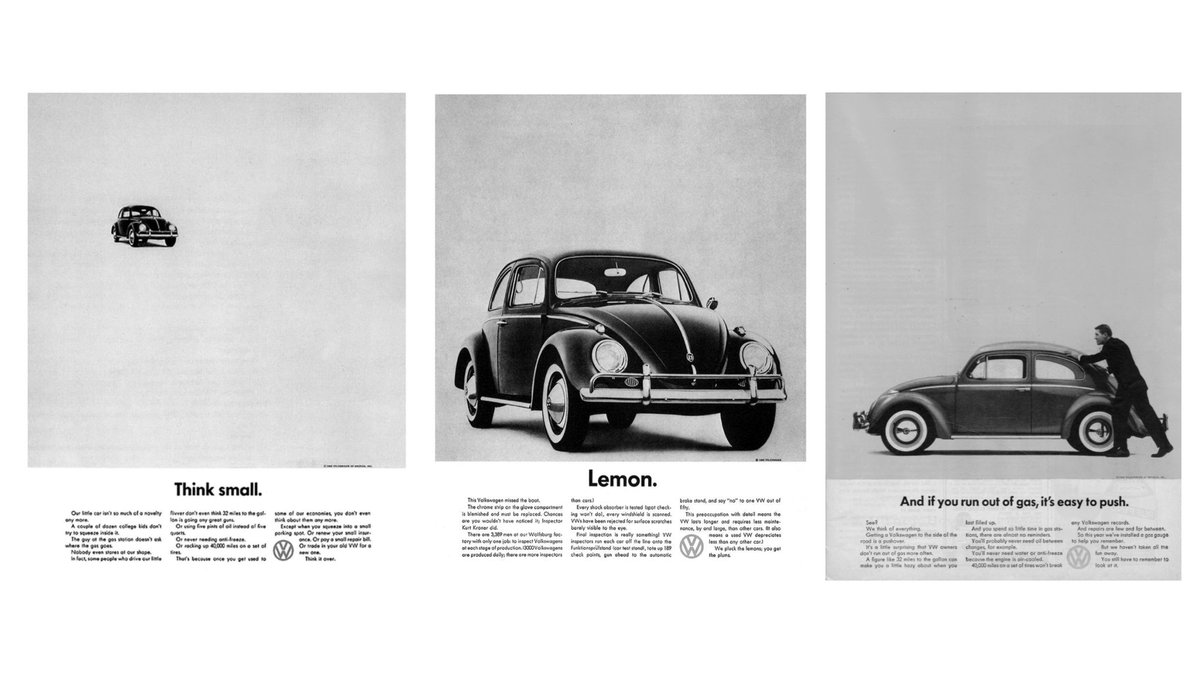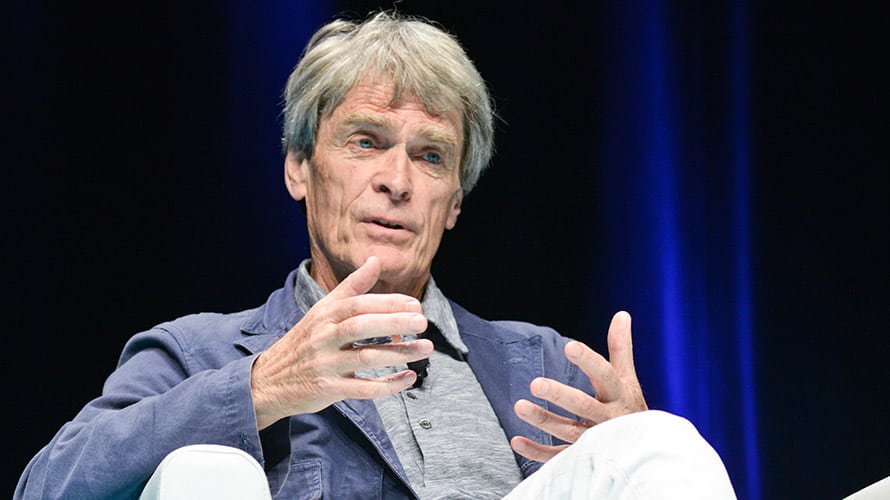‘Just Do It.’ EXPLAINED.
A thread explaining how the words of a serial killer inspired the most impactful slogan ever created.
A thread explaining how the words of a serial killer inspired the most impactful slogan ever created.

1) Nike only reached their level of global domination as a sports brand because of ‘Just Do It.’
The tagline opened the doors for Nike to talk to every single person remotely interested in fitness.
The tagline opened the doors for Nike to talk to every single person remotely interested in fitness.

2) ‘Just Do It.’ unified all of the brand's consumers under one idea. No matter if that was a grandmother going for a walk or Lebron James working out to get an NBA title. 

3) The slogan became a mantra for millions and a north star for Nike’s marketing team to explore for 30+ years.
4) 'Just Do It.’ is a tagline created by agency Wieden+Kennedy (W+K) in 1988 as part of the launch of an advertising campaign to promote Nike to the mainstream audience in America. 

5) In 1985, Nike’s sales were down and everyone at the company knew why.
During the previous decade, the company became successful selling running shoes to mainly young males who were fitness fanatics.
During the previous decade, the company became successful selling running shoes to mainly young males who were fitness fanatics.
6) In the 1980s, Nike’s marketing strategy continued to be focused on talking to the top range of male athletes in sports, excluding a huge chunk of other audiences who were interested in fitness. 

7) Nike was a young and male oriented brand that lacked the latitude to appeal to women and to older groups who were interested in exercising daily. 

8) Nike was too busy talking to the top range of athletes to notice a new trend revolutionizing exercising in America: aerobics.
9) The brand in position to take advantage of the aerobics craze was Reebok.
They launched a colorful shoe designed for aerobics in the mid ‘80s, which became an instant success in that style-obsessed decade.
They launched a colorful shoe designed for aerobics in the mid ‘80s, which became an instant success in that style-obsessed decade.

10) Reebok was seen as a young and hip brand that was in touch with their audience needs for more style-oriented designs.
The Reebok consumer was generally female, but also included more broadly people who were trying out aerobics as their daily exercise.
The Reebok consumer was generally female, but also included more broadly people who were trying out aerobics as their daily exercise.
11) Nike recognized they had exhausted their niche of selling running shoes to young male fitness enthusiasts and that they didn’t have the right brand or product to compete with Reebok.
New products and a new marketing strategy were needed.
New products and a new marketing strategy were needed.
12) The tide started to turn bc of Janet Champ (left) and Susan Hoffman (right). The creatives working at W+K were working on a campaign to promote the new Nike Air.
Their brilliant idea was to use the Beatles “Revolution” song to talk about the innovative tech of the sneaker.
Their brilliant idea was to use the Beatles “Revolution” song to talk about the innovative tech of the sneaker.

13) “Revolution” featured quick shots of people exercising to the sounds of the Beatles song. The film was meant to promote a revolution in fitness and to make Nike part of it.
It worked. “Revolution” shot Nike up to the mainstream on the back of the Beatles fame.
It worked. “Revolution” shot Nike up to the mainstream on the back of the Beatles fame.
14) The “Revolution” campaign also forced a change of internal philosophy at Nike from a product-focused company to a marketing-focused organization.
15) With a new focus on marketing, Nike realized they needed to appeal to a wider circle of consumers to grow the brand.
To do this job, Scott Bedbury was hired in 1988. With only three weeks at Nike, Bedbury sent the following brief to W+K:
To do this job, Scott Bedbury was hired in 1988. With only three weeks at Nike, Bedbury sent the following brief to W+K:

16) The brief was clear: create a campaign for television that expands Nike’s audience to potentially every single person in America.
The new north star was that if you had a body, you were an athlete. And Nike wanted to talk to you.
The new north star was that if you had a body, you were an athlete. And Nike wanted to talk to you.
17) W+K’s response was a series of TV ads celebrating the joy of the experience of participating in sports and fitness.
Some of the films featured kids, others heroed women and one was about a 80yo runner. A departure from their young male niche audience of the previous years.
Some of the films featured kids, others heroed women and one was about a 80yo runner. A departure from their young male niche audience of the previous years.
18) The night before presenting the films to Nike, Dan Wieden (right), one of W+K’s founders, was not sure about how the films were working together. 

19) He explained: “We had done a bunch of spots for Nike's first big push on TV. They were all done by different creatives, so they looked different. Some were humorous, others aggressive, others heroic. So I thought we needed a line to hold everything together.
20) "I was trying to write something that would tie it up, so it could speak to women who had just started walking to get in shape, to people who were world-class athletes — and it had the same kind of connection with them."
21) Wieden found inspiration in an odd place. He recalled the words of serial killer Gary Gilmore, who when facing a five-men firing squad in 1977 shouted as his last words “Let’s do it!”.
"I liked the ‘do it’ part of it," said Wieden.
"I liked the ‘do it’ part of it," said Wieden.

22) Wieden changed the “Let’s to “Just” so he wouldn’t have to credit Gilmore and set off to present the work to Phil Knight and his team.
23) Knight, Nike’s founder, liked the work but hated the tagline. “I went to Nike and Phil Knight said, ‘We don’t need that sh**,'” Wieden recalled “I said, ‘Just trust me on this one.’ 

24) In July 1988, the first “Just Do It” television commercial was released featuring 80-year-old Walt Stack crossing the Golden Gate Bridge on his daily 17-mile run.
25) ‘If you have a body, you are an athlete’ was Nike’s new positioning with ‘Just Do It.’. One of the campaign launch films even featured someone walking their dog as their daily exercise.
A more inclusive point of view than before.
A more inclusive point of view than before.
26) With the “Just Do It.” campaign and new products, Nike was able to increase its share of the domestic sport-shoe business from 18% to 43% between 1988 and 1998, and from $877 million in worldwide sales to $9.2 billion.
27) Since then, the brand's most famous advertising has been signed off with the slogan. From the basketball campaigns, to World Cup ads, to product launches and to more brand-focused work, they all feature ‘Just Do It.’. 

28) The slogan is still a critical part of Nike’s marketing plans. For the 30th anniversary of the ‘Just Do It.’ launch, the brand released a campaign introducing Nike’s positioning on social injustices featuring controversial former NFL quarterback Colin Kaepernick. 





29) ‘Just Do It.’ was the most important brand element for Nike to reach its success as a consumer brand. Even more important than the swoosh logo. 

30) That’s because the line made it possible for Nike to talk to almost every single consumer in the world. If you have a body, you are an athlete, and a potential Nike customer. 

31) The line is simple, memorable and has been used for decades to galvanize both Nike’s internal teams and millions of consumers to build one of the strongest brands we have ever seen.
And that’s why it’s the most impactful tagline ever created.
And that’s why it’s the most impactful tagline ever created.
32) Some of the sources for this thread:
creativereview.co.uk/just-do-it-slo…
brandingstrategyinsider.com/behind-nikes-c…
brandingstrategyinsider.com/5-lessons-from…
campaignlive.co.uk/article/histor…
washingtonpost.com/news/morning-m…
mdgadvertising.com/marketing-insi…
oregonlive.com/business/2008/…
condor.depaul.edu/aalmaney/Strat…
soar.wichita.edu/bitstream/hand…
creativereview.co.uk/just-do-it-slo…
brandingstrategyinsider.com/behind-nikes-c…
brandingstrategyinsider.com/5-lessons-from…
campaignlive.co.uk/article/histor…
washingtonpost.com/news/morning-m…
mdgadvertising.com/marketing-insi…
oregonlive.com/business/2008/…
condor.depaul.edu/aalmaney/Strat…
soar.wichita.edu/bitstream/hand…
• • •
Missing some Tweet in this thread? You can try to
force a refresh













